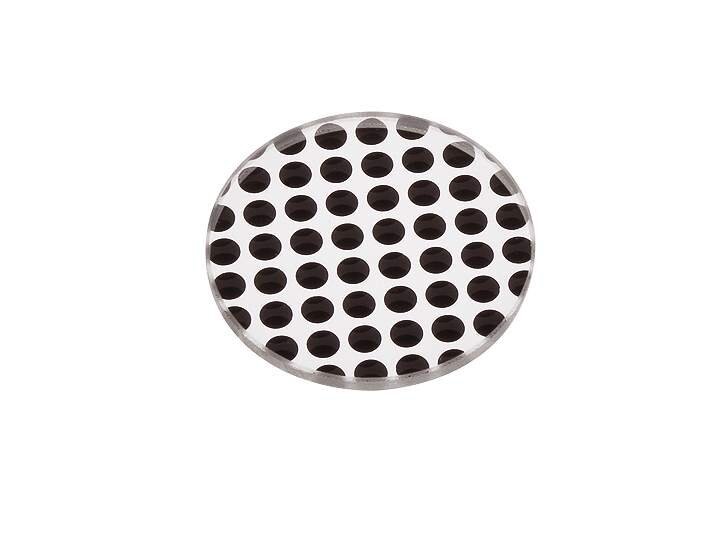Covering the Basics of Beamsplitters
/Let’s split the difference, shall we?
What are Beamsplitters?
Beamsplitters (also known as beam splitters or power splitters) are an optical component used to split an incident beam of light at a set ratio into a transmitted beam and a reflected beam. Beamsplitters are usually made as a reflective device that splits the beam into exactly 50/50 with half of the beam being transmitted and the other half being reflected. If this component is reversed it can actually be used to converge two separate beams into a single one.
Beam splitters are integral to most optical systems and are also used in interferometers, fiber optics and imaging systems.
There are several different types of beamsplitters but the main categories are plate beamsplitters and cube beamsplitters.
Cube Beamsplitters
A cube beamsplitter is made from sandwiching two triangular glass prisms together and bonding them together either with a transparent resin or cement. In modern days, synthetic epoxies and urethane resins are common but originally, Canada balsam natural resin was the glue of choice going back to the 1800s. Another method of joining the prisms together is optical contact bonding, a precise method which requires both surfaces to be immaculate before joining them together.
A manufacturer can either increase or decrease the thickness of the resin layer to adjust the power splitting ratio for a given wavelength. Additionally, coatings such as dielectric coatings or thin metal coatings can be added to split the beam either by wavelength or by polarization properties.
i didn’t even have to use my beamsplitter. i gotta say it was a good day.
some very photogenic optics right there
Benefits of Cube Beamsplitters
The main advantage of cube beamsplitters over plate beam splitters is that cubes do not create ghost images as are common with plates. Cubes also enable the end-user to use a shorter optical pathlength over plates, to keep equal transmitted and reflected pathlengths and to integrate them seamlessly into an optical system due to its ability to keep a 0º angle of incidence.
Cubes are of a robust construction and can be glued to a square base removing the need for additional supporting structures as would be needed with a plate beamsplitter. Speaking of robust, a cube deforms far less than a plate when exposed to mechanical stress. An Anti-reflective (AR) coating is frequently applied to the external surfaces, making them durable and easy to clean. Additional beamsplitter coating is often added to the hypotenuse of one of the prisms inside and is protected from scratches, dust and stains.
Plate Beamsplitters
A plate beamsplitter, also referred to as a “dielectric mirror”, is comprised of a thin plate of optical glass with different types of coating on each side. Most plates contain AR coating on the non-incident light side in order to remove unwanted Fresnel reflections while an aluminum coating is used on the incident side to serve as a mirror.
Plate beamsplitters are generally used at a 45º angle of incidence and the mirror coating is deposited in such a way that 50% of the light is reflected and 50% of the light is transmission. This is the standard 50/50 beamsplitter, which is the most common design.
a standard issue plate beamsplitter in action
A less common design is the “Swiss-cheese” or polka dot beamsplitter, which consists of a highly polished mirror coating deposited on glass. The original swiss cheese contained perforations in the material meant to reach the desired level of transmission and reflection while more modern designs contain circular patches of deposited metal coating.
the polka dot beamsplitter. break out your accordions!
Plate beamsplitters also come available in IR materials such as Calcium Fluoride (CaF2), Zinc Selenide (ZnSe) and Potassium Bromide (KBr). A CaF2 substrate can be used for wavelengths up to 8μm and KBr with Germanium coating can be used out to 25μm. The IR beam splitter, is typically made in plate form and optimized to perform as a 50/50 with transmission and reflection. Beamsplitter coatings are typically added to the front while AR coating is added to the back like many other standard plate designs.
Advantages of Plate Beamsplitters
Plate beamsplitters are less expensive than their cube counterparts making it a lower barrier to entry for aspiring optical engineers. They are also simpler constructions and therefore lighter in weight and easier to manufacture in larger sizes that are not available for cube beam splitters.
Another benefit is the plate beamsplitters lack of optical cement, which is used in cubes to join the two prism halves together. The cement is the weak point in cube constructions as it has a lower damage threshold for lasers and degrades when exposed to continuous UV light. One final advantage is that plate beamsplitters are thinner and require less material for the light to travel through than the cubes.
Polarizing Beamsplitter
While standard non-polarizing beamsplitters divide light by wavelength, a polarizing beamsplitter will split the incident beam into two separate beams of differing linear polarization. Linear polarization means that the light beam’s electrical field stays confined to a single plane. A polarizing beamsplitter is used to transmit p-polarized light and reflect s-polarized light. P-polarized light (the “P” references “parallel) has an electrical field polarized parallel to the plane of incidence while S-polarized light (the “S” referring to the German word for perpendicular or senkrecht) is perpendicular to the plane of incidence. These types of polarizers are frequently used in the semiconductor and photonics industry.
linear polarization. be a holy roller- a polar bowler.
Like their non-polarizing counterparts, polarizing beamsplitters also come in plate or cube configuration and can be used with a range of angles of incidence.
Subtypes of Polarizing Beamsplitters
Wollaston Prism
Invented in the 19th century by English physicist William Hyde Wollaston, the Wollaston Prism is a beamsplitter that manipulates polarized light by separating it into two distinct linearly polarized outgoing beams with orthagonal polarization.
The Wollaston prism is typically made from either calcite or quartz. It operates by having light hitting the surface of the prism at right angles which is converted into an ordinary (O) ray and and extraordinary (E) ray. At the interface, O and E rays flip as they approach a prism with an optical axis orthogonal to the first segment. This refracts the incident rays into opposite directions and the angle of this divergence can be determined by the wedge angle of the two prisms that make up the beamsplitter. Most commercially sold Wollaston prisms range from 15º to 45º wedges.
Wollaston prisms are most famously found in CD players, rotation mounts and polarization microscopy.
a wollaston prism in action
Nomarski Prism
The Nomarski prism is a modified Wollaston prism created by French physicist Georges Nomarski in the 20th century. Used in differential interference contrast microscopy, it consists of two wedges in a very similar construction to the Wollaston prism but the difference is the second wedge of the prism is modified by cutting the crystal so the optical axis is obliquely oriented with respect to the flat surface of the prism.
This modification creates converging polarized beams, which merge into a focal point outside of the prism. While the Wollaston prism produces diverging polarized light, the Nomarki prism creates converging polarized beams. This convergence allows setting up a microscope so that the prism can be actively focused.
a nomarski prism
Parting Words
Firebird Optics provides a full product line of beam splitters made from calcite, glass, quartz and a range of IR materials. You can check our website for our full and expanding offering of beamsplitters. If you still can’t find what you need, please send us an e-mail to info@firebirdoptics.com
Here’s to your success!
Firebird Optics













